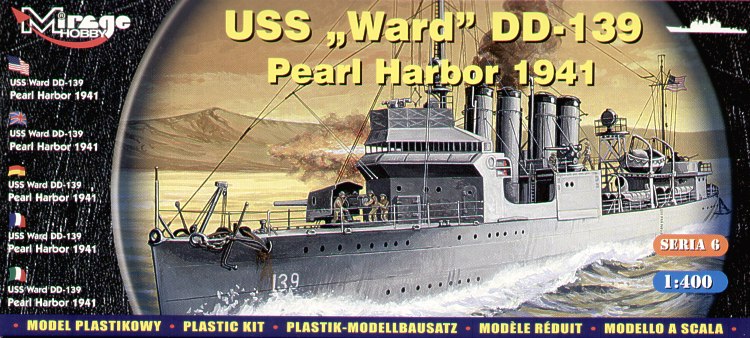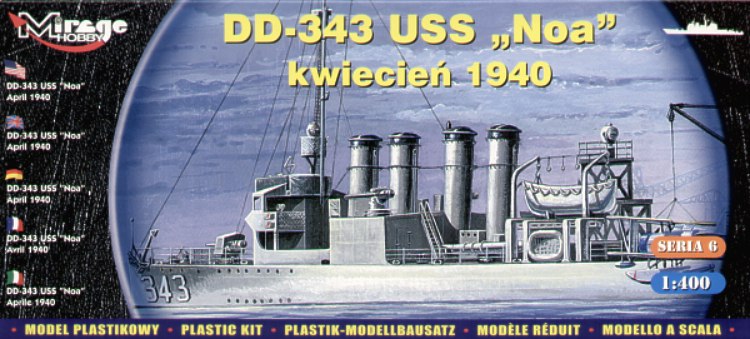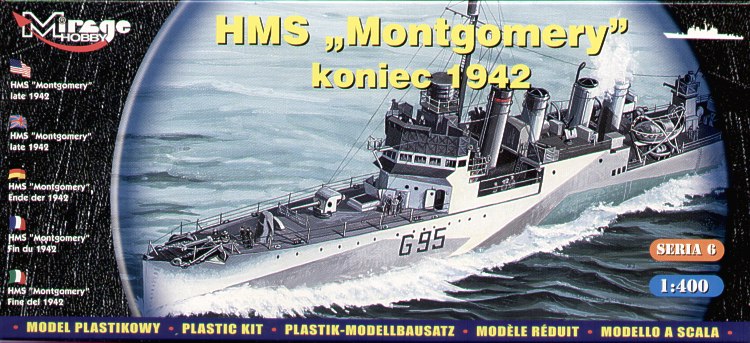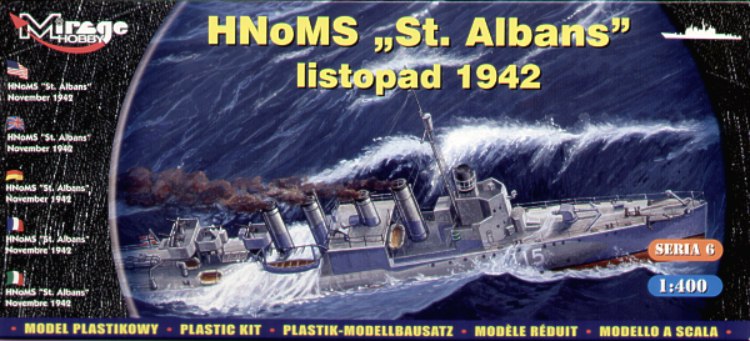You are viewing the archived version of the site.
Go to modelshipwrights.com for the current dynamic site!
Go to modelshipwrights.com for the current dynamic site!
Tuesday, July 31, 2007 - 11:53 AM UTC
Mirage Hobby sends us news of four new releases for tin can fan. Look for these four Clemson class flush-deckers in 1/400 to retail for $16.17
USS Ward 1941

USS Noa 1940

HMS Montgomery 1942

HMS St. Albans 1942


USS Noa 1940

HMS Montgomery 1942

HMS St. Albans 1942

Click Star to Rate
Only 1 reader has rated this.
THIS STORY HAS BEEN READ 6,745 TIMES.
| Mirage Hobby Reviews | MORE |
| Tarantula II Missile Corvette by Rade Marjanovic | of 1 ratings, 100% found this helpful | |
| German Torpedoboot by Rade Marjanovic | of 1 ratings, 100% found this helpful | |
| Type II U-Boats by Tim Reynaga | of 1 ratings, 100% found this helpful | |
| HMS Spiraea by Felix Bustelo | of 2 ratings, 50% found this helpful | |
| V-106 Torpedo Boat by Jay Massey | of 7 ratings, 100% found this helpful | |
| ORP Wicher Kit and PE Set by Jay Massey | of 3 ratings, 100% found this helpful | |









Comments